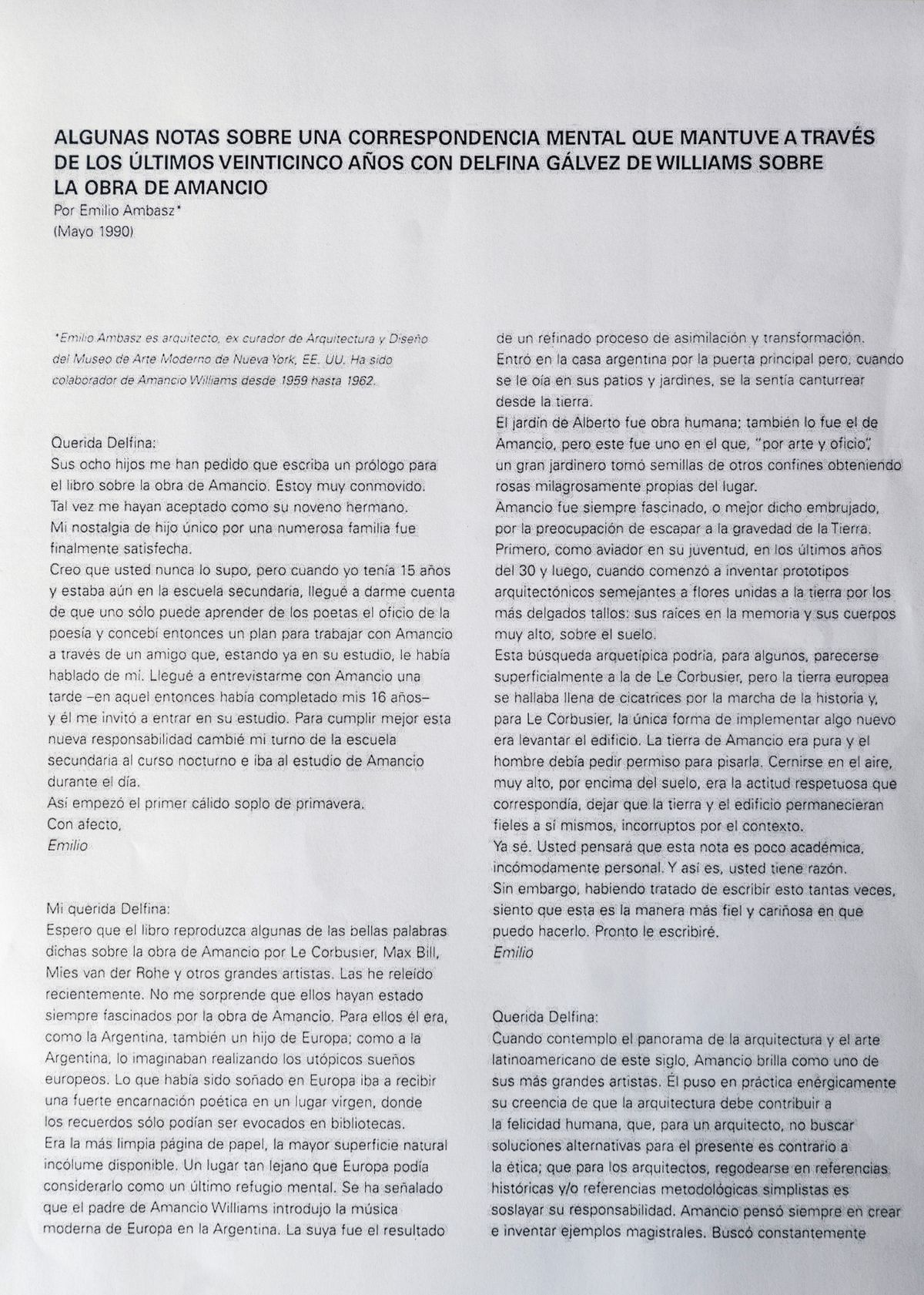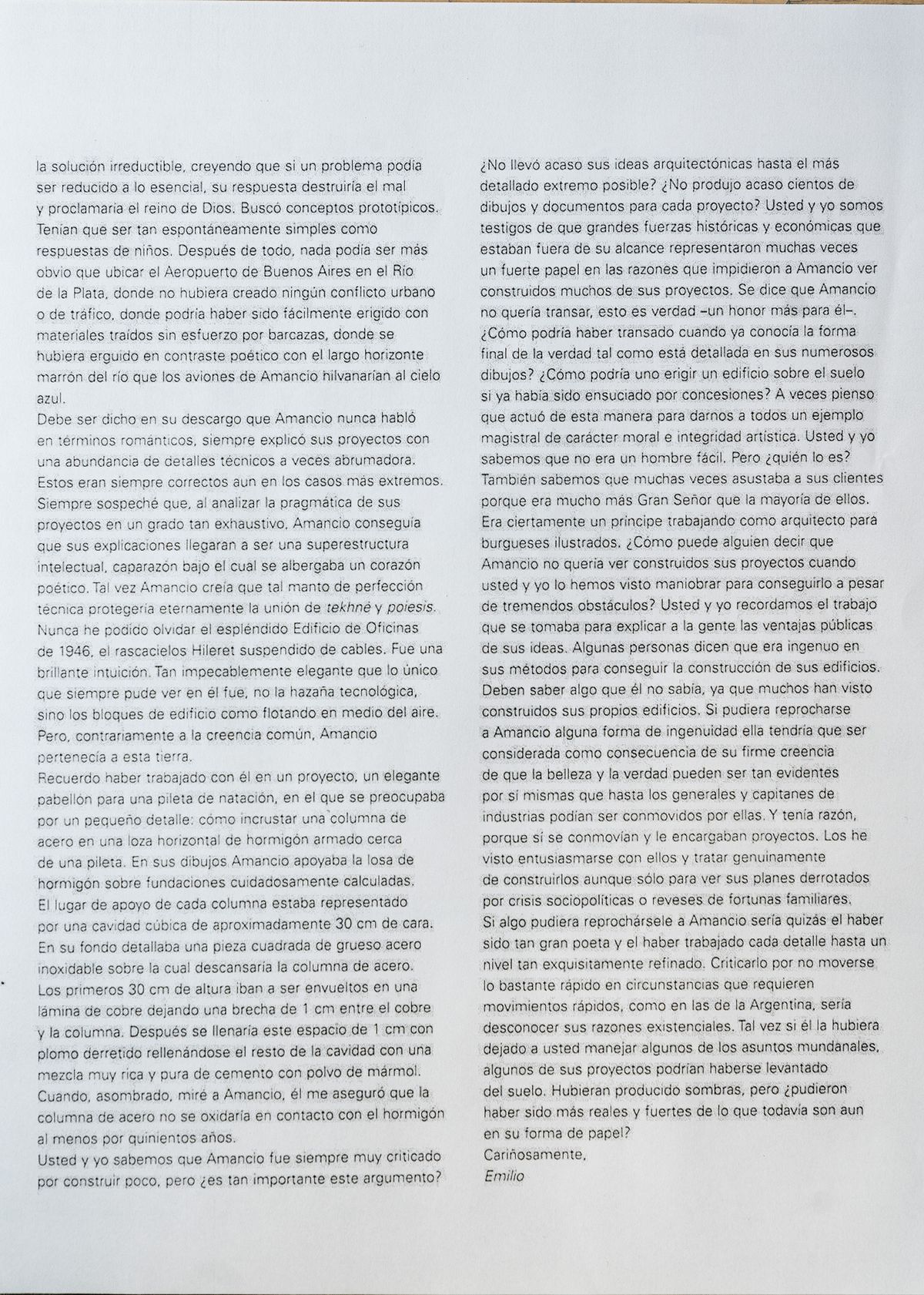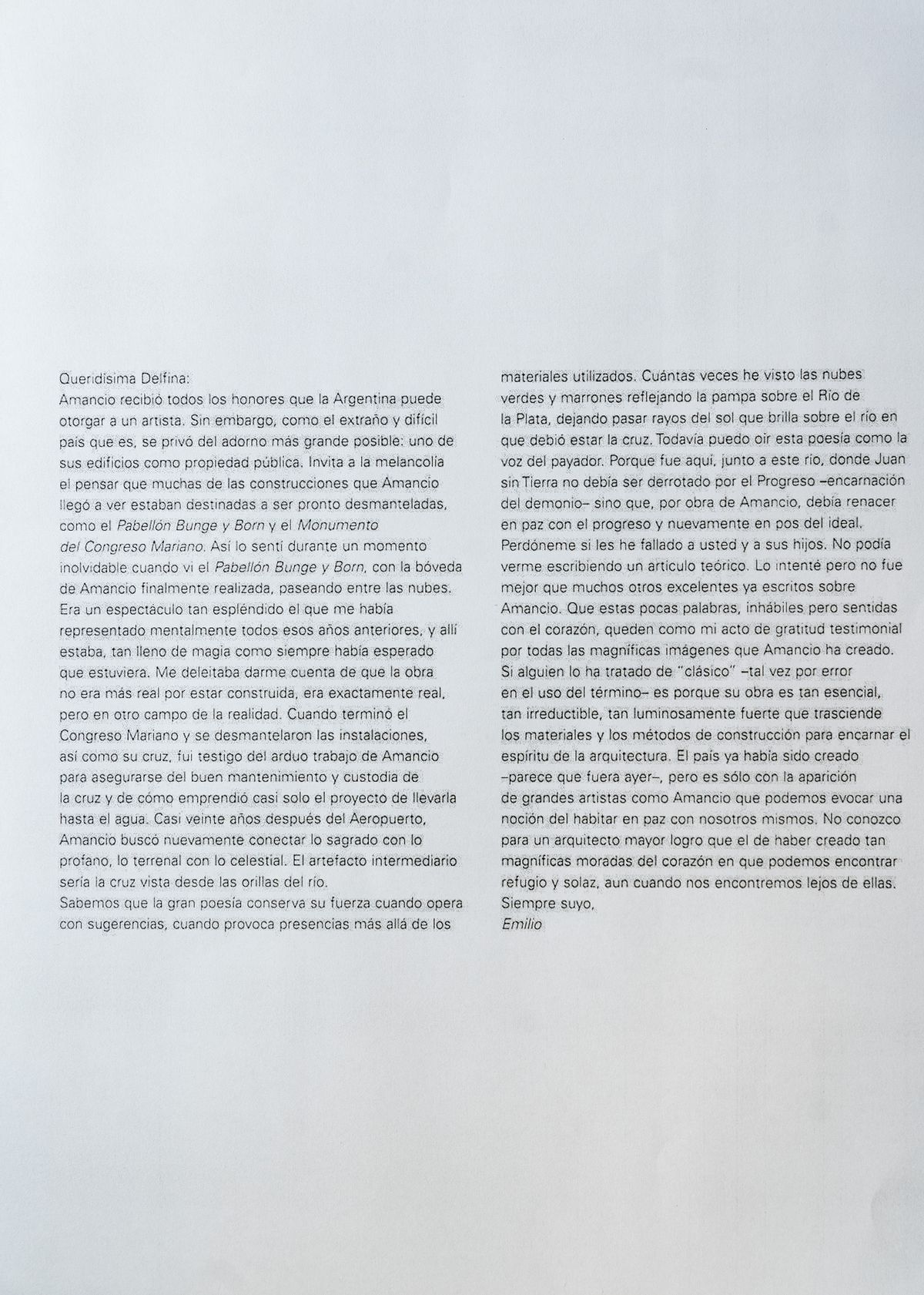As I look at the panorama of this century’s Latin American art and architecture, Amancio shines as one of its greatest artists. He strongly practiced his belief that architecture must contribute to human happiness; that for an architect not to search for alternative solutions to the present was unethical; that for architects to revel in historical and/or simple-minded methodological references was to skirt their responsibility. He always believed in creating and inventing master examples. He constantly searched for the irreducible solution, believing that if an architectural problem could be reduced to its essential, its answer would stun evil and proclaim God’s kingdom. He searched for prototypical pilot concepts. They were to be as unselfconsciously simple as many a child’s answers. After all, what could be more obvious than to put Buenos Aires’s airport on the water of the Rio de la Plata where it would not have created urban and traffic conflicts, where it could have been easily erected by barges effortlessly bringing materials to the site, where it would stand out in poetic contrast with the river’s long brown horizon, which Amancio’s planes were to stitch to the blue sky.
It must be said in his defence that Amancio never spoke in romantic terms; he always explained his projects with a sometimes overbearing abundance of technical details. These were always right, even in their most extreme cases. I have always suspected that by analyzing the pragmatics of his projects to such an exhaustive degree, Amancio made it possible for his explanations to become an intellectual superstructure, a shell under which dwelt the poetic core.
I have never been able to forget Amancio’s splendid tall office building of 1946, the “skyscraper” suspended from wires. It was a brilliant insight. So impeccably elegant that the only thing I could always see was not the technological bravado, but the blocks of buildings floating as if in mid-air. But, contrary to popular belief, Amancio was of this earth. I remember working with him on a project, an elegant pavilion, and he was concerned about a small detail: how a steel column would rest on and inside a horizontal reinforced concrete slab, close to a swimming pool. In his sketches, Amancio laid out the concrete slab on carefully based foundations. Then, the resting location of each column was represented by a cubic empty cavity, an approximately thirty-centimetre cube. At the bottom of the cubic cavity, he detailed a square piece of thick stainless steel plate, on which the I-beam steel column was to rest. Then, the first thirty centimetres of the steel column were to be wrapped in a copper sheeting, leaving a one-centimetre gap between the copper and the steel column. Afterwards, this one-centimetre interspace was to be filled with molten lead and the remainder of the cavity was to be again filled with a very rich and pure mixture of cement containing powdered marble. When, puzzled, I looked at him, Amancio assured me that this was done to ensure that the steel column wouldn’t rust in contact with the concrete for at least five hundred years. You and I know that Amancio has always been criticized for building very little, but is it such an important argument? Did he not carry his architectural ideas to the most detailed extent possible? Did he not produce hundreds of drawings and construction documents for each project? You and I are witnesses that larger historical and economic forces beyond his power many times played a very strong role in the reasons why Amancio did not get to see many of his projects built. It is said that Amancio did not want to compromise; that is true—more honour to him for that. How could he have compromised when he already knew the ultimate shape of truth as detailed in his many drawings? How could one put a building above ground if it had been soiled by compromise? I sometimes felt that he did it to give us all a master example of moral character and artistic integrity. You and I also know that he was not an easy man —but then who is? We also know that he frightened his clients many times for he was more of a Grand Lord than many of them. He was certainly a Prince working as an architect for enlightened Burghers. How can one say that Amancio didn’t want to see his projects built when you and I have seen Amancio maneuvering to get his buildings built in spite of tremendous odds? You and I remember all of Amancio’s travails to explain to people the public advantages of his ideas. Some people say that Amancio was naive in his methods to get his buildings built. They must know something he did not know, for many of them have seen their buildings built. But, if Amancio can be blamed for any form of naivete, it would have to be placed at the feet of his steadfast belief that beauty and truth can be so self-evident that even Generals and Captains of industry would be touched by it. And he was right because they were touched by it, and they commissioned him projects, and I have seen them touched by them and genuinely trying to build them only to see their plans defeated by socio-political crises or disturbing reversals of family fortunes. If blame can be put on Amancio for anything, it would be for being such a great poet, for working out each detail to such an exquisitely refined level. To blame him for not moving fast enough in circumstances like Argentina’s that required nimble dancing would miss his existential reasons. Perhaps, if he had let you handle some of the worldly affairs, a few of his projects might have gotten off the ground. They would have cast shadows, but would they have been any more real and stronger than they are still today, even in their paper form?
Lovingly,
Emilio


